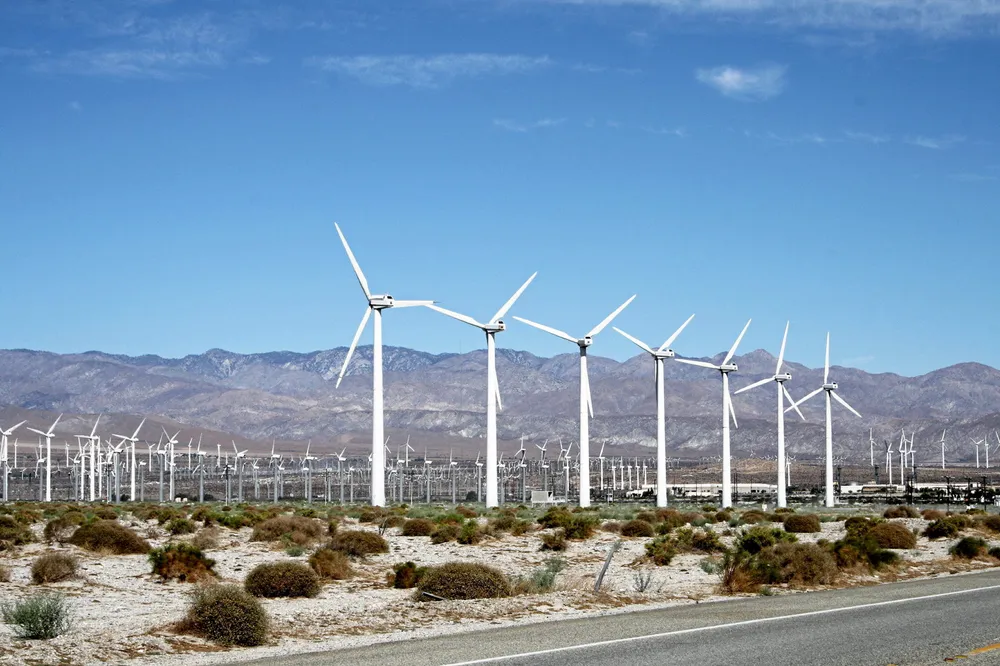US seeks answers to Trump wind turbine 'garbage' charge
Department of Energy report highlights that 90% of machines can be recycled, but more work needed for critical minerals and blades

A US Department of Energy (DoE) report released Tuesday highlighted that existing infrastructure is sufficient to recycle 90% of wind turbine components and materials, potentially addressing one of President-elect Donald Trump’s key concerns for the sector.
Wind has helped power the US economy starting in the 1980s, and many turbines have been scrapped, often repowered with newer, more powerful models, but generating substantial waste in the process.
The issue of waste could only worsen as an additional 1TW (1,000GW) of new wind power could be deployed to meet current goals of 100% clean energy by 2035, according to DoE’s high deployment scenario.
To address this, DoE established its Wind Energy Recycling Research, Development, and Demonstration programme early in President Joe Biden’s administration “to create innovative and practical approaches to increase the reuse and recycling of wind energy technologies.”
The nation had more than 148GW of wind power in 2023, nearly all of it onshore, according to the National Renewable Energy Laboratory (NREL) under DoE.
“The US already has the ability to recycle most wind turbine materials, so achieving a fully sustainable domestic wind energy industry is well within reach,” said Jeff Marootian, principal deputy assistant secretary for DoE’s Office of Energy Efficiency and Renewable Energy.
“Innovation is key to closing the loop, and this research will help guide national investments and strategies aimed at advancing technologies that can solve the remaining challenges.”
The programme is guided by research by DoE institutes led by NREL with the Oak Ridge and Sandia laboratories, which published the first part of their results Monday that aimed to establish recycling baselines and research and development (R&D) priorities.
Steel waste generated by the sector would require only 10% of the current sector recycling capacity, the report said.
However, as Trump noted in his remarks, gigantic fibreglass blades as well as nacelle covers currently cannot be effectively handled by the US recycling sector.
The nation also cannot recycle “rare earth elements in permanent magnets, electrical steel in generators, and cobalt, nickel, and chromium used as alloying elements in steel types.”
“They say, you can't, because it's a certain fibreglass, that the blades cannot be buried in earth,” Trump said. “So, what do you do with them?”
Reduce, reuse, recycle
It advocated for reusing recovered carbon fibres through dedicated facilities, optimising processes, and “creating recyclable blade designs to increase recovery of resin systems.”
For recovery of critical minerals from permanent magnets used in generators, the report encouraged research and development (R&D) into magnet-to-magnet recycling and “innovations in rare-earth-refining technologies and processes are needed to lower operating costs and reduce solvent use.”
All of these “could improve US magnet manufacturing competitiveness and reduce life cycle energy and GHG emissions associated with existing solvent-intensive rare earth element refining operations,” it said, adding: “All studied magnet recycling processes yield raw materials that have up to 70% lower life cycle GHG emissions than their conventional counterparts.”
The study focused on short (2024-26), medium (2026-35), and long term (beyond 2035) priorities, culminating in the use of environmentally friendly raw materials and greater circularity in manufacturing to reuse existing materials in future deployment.
The forthcoming Part 2 will provide “a deep-dive assessment of recovering materials from difficult-to-recycle system components” and reusing them “in potential future component designs or other secondary markets,” the NREL-led team said.
Trump effect
While the study looked at high-deployment scenarios “to project an upper bound[ary] for US wind energy material needs,” this scenario may be increasingly unlikely in the face of Trump opposition, particularly in offshore wind where the executive branch holds sway over federal approvals.
Most onshore wind development occurs on private lands, however, and analysts are divided as to whether Trump could directly slow deployment.
The sector benefits from tax incentives included in the Inflation Reduction Act (IRA) that could come under fire from Trump’s fellow Republicans in Congress, although this too is hotly debated.
The IRA has spurred billions of investment in clean energy manufacturing and deployment, two-thirds in Republican controlled districts, which Congressional leaders would be unlikely to unwind.
(Copyright)